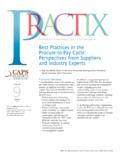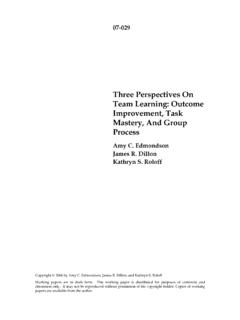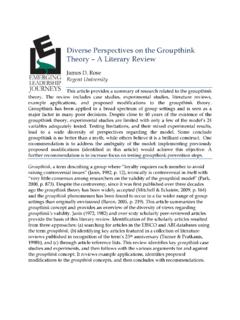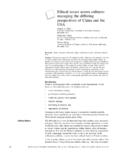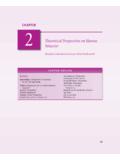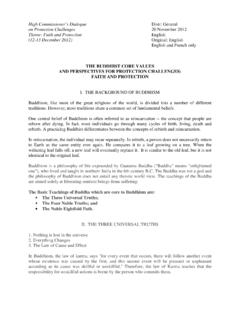Transcription of P2P SAP Best Practices: Perspectives from …
1 1 P2P SAP best practices : Perspectives from Suppliers and Subject Matter Experts A White Paper Rob Handfield Bank of America University Distinguished Professor NC State University 2 EXECUTIVE SUMMARY A qualitative study of the Procure to Pay (P2P) process was undertaken by the research team in order to determine the symptoms, root causes, and recommended approaches to identifying and solving the problems associated with the P2P process in the SAP environment. We interviewed a number of suppliers who shared their insights in working with companies in an SAP environment, and interviewed a number of subject matter experts. The research identified six key findings that can lead to improvement in the P2P cycle: Develop common processes and procedures for the P2P process, and roll-out training at site level to ensure that people are comfortable with the approach.
2 Be prepared to modify minor elements the process to accommodate site-level requirements, but keep the essential elements of the process flow intact. Emphasize the importance of this approach to the entire P2P cycle, including accounts payable, invoicing, and blocked and parked invoices. Explain the impact of lack of adherence to process and that the supplier will not be paid in a timely manner for their work if errors occur in the process. Improve master data robustness and integrity. Whether this involves ensuring proper audits of external vendor catalogs, or internal content management, clean master data is a mundane but critical element to supply management and P2P best practices . Minimize opportunities in the P2P process for keystroke and freetext errors to occur, by error-proofing the system and mapping the process to identify where errors are occurring.
3 Recurring training will also ensure that errors are reduced. Explore punch-out roundtrip and other approaches to exploit external content management approaches. This is especially important to ensure that the most efficient buying channel is selected. Exploit the use of procurement cards for high transaction volume, low transaction value purchases. Pcard technology has evolved significantly, and companies need to identify opportunities for hard dollar savings through this approach via rebates. Be sure to update master data and pricing rates on an on-going basis. In particular, attention should be paid to units of measure, appropriate industry-standard nomenclature, updating of labor rates based on market conditions, and on-going clarification of requirements against existing contracts. Establish how you are buying products and services, and document the buying channels through which these purchases are occurring.
4 Inevitably, you will discover that purchases are occurring through improper or less-efficient channels, which is detracting from your team s ability to engage in strategic value-added approaches. Get out of the transaction management business! To do this, you need to establish standard processes and procedures, and commit to a change management plant to 3 ensure that people are using the right buying channels for the different types of spend. As technology and business requirements evolve, the P2P cycle will certanly need to be re-visited from time to time to ensure it is meeting the needs of internal customers, and that suppliers are satisfied with the system. 4 Procure to Pay best practices : Perspectives from Suppliers and Industry Experts Introduction As more companies are seeking to move beyond procurement into fully deployed supply chain systems, a key challenge for many companies is in the area of improving efficiency in their procure to pay cycle for many of their contracted services, especially in the area of facilities maintenance and on-site contract management.
5 There exist multiple challenges in environments where field associates are working from manual or electronic systems, requisitioning on-site services for maintenance or other activities, and ensuring that this information is captured effectively. In addition, there exist significant challenges to ensure that the proper service level agreement is fulfilled, the correct price is charged, the purchase order is transmitted correctly, the invoice matches, and finally, that the supplier is paid the correct amount for the actual services delivered. While many enterprise systems claim that these elements are simply defined within their structural logic, the truth is that there are many opportunities for error, and that without a planned process for managing the procure to pay cycle, your organization may be bearing significant costs due to non-compliance to system or process requirements.
6 A qualitative study of the Procure to Pay process was undertaken by the research team in order to determine the symptoms, root causes, and recommended approaches to identifying and solving the problems associated with the P2P process. Moreover, the team was interested in seeking answers to the following questions: What the symptoms of the problem that are being experienced by internal buyers, vendors, and subject matter experts? What do these groups of respondents believe are the underlying root cause for these problems? What are the recommended solutions and potential benefits associated with the solutions suggested by respondents? This benchmarking study sought to define and understand the best practices currently being employed by companies in the procure to pay cycle for services. Specifically, the research team focused in learning and sharing best practices in the following areas shown in Figure 1: Forecasting and Planning of Requirements Need Clarification / Specification Sourcing Decisions in Emergency / Non-emergency situations 5 Contract P/O Generation for Structured or Unstructured requirements Receiving of Services, Materials, and Documents Settlement and Payment in Accounts Payable.
7 Procure to PayGeneric High Level Process MapForecastPlan &CoordinateNeed Clarification/SpecificationSourcingDecis ionContract / POGenerationSupplier Need FulfillmentReceive Material& DocumentsSettle and PayStartEnd Figure 1 Research Approach In order to explore how an organization should approach improvements to the P2P cycle, we adopted a grounded case-based research approach to identify the issues and develop a framework for analysis. Case research requires that a set of detailed interviews with a small sample of firms involved in the phenomenon of interest be studied in detail to determine qualitative insights into the Before beginning a case study, however, it is necessary to have a conceptual model for crafting research instruments and The conceptual model for studying the research questions was therefore derived, based on existing literature as well as a kick-off meeting held in early June.
8 1 K. Eisenhardt, Building Theories from Case Studies, Academy of Management Review, 14, p. 532-550, 1989. 2 M. Miles, and A. Huberman, Qualitative Data Analysis (Second Edition). Thousand Oaks, CA: Sage Publications, 1994. 6 Next, an interview protocol was developed based on a general understanding of issues facing the organization and the hypotheses developed. (See Figure 1.) Questions focused around the workflow associated with the movement and management of materials and services to the company s facilities, and included vendors and subject matter experts from a number of external companies. Key respondents were identified in each of these areas, and interviews were carried out using the structured interview protocol. We first interviews nine suppliers who had worked closely with SAP customers.
9 Next, we identified a group of subject matter experts in the form of senior supply chain management executives who described a number of best practices they had deployed within their respective organizations to specific problems identified by the suppliers within the P2P cycle. Each of these individuals had worked specifically in the area of the P2P cycle, and had gone through steps to address the issues through specific improvement projects. Both groups were interviewed and provided feedback and observations. Following each interview, the field notes were written up in typeface. The next step (which occurred after to the site visits) involved coding this data The transcribed field notes were reviewed several times by the research team, in order to code the events into their appropriate categories, (consistent with the conceptual model), and to compare field notes taken during the same interview.
10 In the remainder of the report, we describe the results used for assessing the firms, then describe the classification of responses from the interviews. Finally, we conclude with the implications of for organizations seeking to rapidly improve their procure to pay cycle. A supplier s View of the P2P Process We first began by identifying the true customer of the P2P process: the supplier who wishes their invoice to be paid quickly! Many organizations are seeking to build and extent relational capital with suppliers, by building trust and becoming the Customer of Choice . The capital gained through this approach can result in preferred supplier delivery priorities, information sharing, participation on supplier councils, and other important rewards. An important element in becoming a Customer of Choice is to enable rapid payment, equitable and ethical treatment of suppliers.
